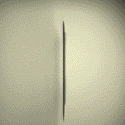
Black superheroes have played a crucial role in shaping the world of comics, breaking down barriers, and redefining what it means to be a hero. Their stories are not just about superpowers and saving the day—they reflect the struggles, triumphs, and resilience of Black communities across generations.
From the Civil Rights Movement to today, Black superheroes have provided representation in a medium that, for decades, lacked diversity, offering young readers characters who looked like them, shared their experiences, and embodied their aspirations.
The importance of Black superheroes goes beyond just the pages of comic books. They have transcended pop culture, influencing movies, television, animation, and even real-world social movements. Figures like Black Panther and Storm broke new ground in the 1960s and ‘70s, paving the way for modern heroes like Miles Morales and Ironheart, who continue to inspire a new generation of fans. Their presence in mainstream media not only challenges outdated narratives but also affirms that heroes come from all backgrounds, regardless of race or gender.
Moreover, these characters have evolved, reflecting shifts in societal attitudes and cultural identity. Once limited to sidekick roles or stereotypes, Black superheroes have grown into leaders, revolutionaries, and icons. Their stories now tackle issues of race, inequality, and justice with depth and nuance, making them as relevant today as ever.
In celebration of Black History Month, we’re highlighting 10 of the greatest Black superheroes, their origins, and how they’ve shaped the world of comics and beyond. These heroes represent strength, innovation, and the power of storytelling—proving that everyone deserves to see themselves as a hero.
1. Black Panther (T’Challa)

First Appearance: Fantastic Four #52 (1966)
T’Challa, the Black Panther, was the first Black superhero in mainstream American comics, created by Stan Lee and Jack Kirby. As the king of Wakanda, a technologically advanced and isolationist African nation, T’Challa embodies intellect, strategy, and unmatched combat skills. Over the decades, he has evolved from a supporting character in Marvel comics to a central figure in the Avengers, a cultural icon in cinema, and a symbol of Black excellence and Afrofuturism, particularly after Chadwick Boseman’s portrayal in the MCU.
2. Storm (Ororo Munroe)

First Appearance: Giant-Size X-Men #1 (1975)
A descendant of African priestesses, Storm was the first Black female superhero in Marvel Comics and one of the most powerful mutants ever created. Born in Kenya and orphaned at a young age, she eventually joins the X-Men, where her ability to manipulate the weather makes her a formidable force. Over time, Storm has led the X-Men, briefly ruled as Queen of Wakanda, and played a pivotal role in mutant and human relations. Her character has evolved to represent strength, leadership, and diversity in comics.
3. Luke Cage (Carl Lucas)

First Appearance: Luke Cage, Hero for Hire #1 (1972)
Luke Cage emerged during the Blaxploitation era of the 1970s as a hero with superhuman strength and unbreakable skin, gained from an experimental procedure while imprisoned for a crime he didn’t commit. Originally known as Power Man, Cage’s evolution has seen him go from a street-level crime fighter to an Avenger, a husband to Jessica Jones, and a mentor to younger heroes. His presence in comics and his Netflix series starring Mike Coulter, solidified him as an icon of resilience and justice.
4. Blade (Eric Brooks)

First Appearance: The Tomb of Dracula #10 (1973)
A half-vampire, half-human hunter of the supernatural, Blade was created during the horror comic boom of the 1970s. His story revolves around avenging his mother’s death by eradicating vampires from the world. Though originally a lesser-known character, Blade gained massive popularity thanks to Wesley Snipes’ legendary portrayal in the late ‘90s and early 2000s, which is often credited with launching Marvel’s modern cinematic dominance. The character continues to thrive in comics and will soon return to the big screen in the MCU.
5. John Stewart (Green Lantern)

First Appearance: Green Lantern #87 (1971)
John Stewart was introduced as one of the first Black superheroes in DC Comics, originally stepping in as a backup Green Lantern. Over the years, he has become one of the most respected wielders of the Green Lantern ring, serving as a military-trained, no-nonsense protector of the universe. His portrayal in the classic animated Justice League Unlimited (2001-2004) further cemented his status as a fan-favorite and a pioneer of Black representation in superhero media.
6. Static (Virgil Hawkins)

First Appearance: Static #1 (1993)
Static was introduced in the Milestone Comics imprint, which focused on diverse representation in comics. As a teenager gifted with electromagnetic abilities, Virgil Hawkins quickly became a fan-favorite, particularly with the success of the early 2000s Static Shock animated series. Over time, Static has transitioned into the main DC Universe, fighting alongside the Teen Titans and continuing to inspire young Black readers with his intelligence, humor, and relatability.
7. Falcon (Sam Wilson)

First Appearance: Captain America #117 (1969)
One of Marvel’s first Black superheroes, Sam Wilson, aka the Falcon, was initially introduced as Captain America’s ally during the civil rights era. As a former social worker and military-trained fighter, he became a symbol of Black empowerment in comics. Over time, Sam evolved from a supporting character into a leader, eventually taking up the mantle of Captain America in both the comics and the Marvel Cinematic Universe, played by Anthony Mackie.
8. Vixen (Mari McCabe)

First Appearance: Action Comics #521 (1981)
Vixen is one of DC’s most underrated Black superheroes, possessing the ability to channel the powers of animals through a mystical Tantu Totem. Originating from Africa, her story is steeped in mythology and legacy, and she has been an integral part of teams like the Justice League and Suicide Squad. Though lesser known in mainstream media, her appearances in animated shows and live-action portrayals in the Arrowverse have expanded her popularity.
9. Cyborg (Adam Brashear)

First Appearance: Adam: Legend of the Blue Marvel #1 (2008)
Blue Marvel is one of Marvel’s most powerful superheroes, rivaling Superman in strength. A former U.S. Marine and scientist, he acquired anti-matter-based powers during an experiment. His biggest struggle wasn’t just fighting villains but overcoming racial prejudice, as the U.S. government forced him into early retirement when the world discovered he was Black. In recent years, his character has been revitalized as a key player in Marvel’s cosmic landscape, fighting alongside the Avengers and the Ultimates.
10. Ironheart (Riri Williams)

First Appearance: Invincible Iron Man #7 (2016)
A brilliant teenage inventor, Riri Williams built her own Iron Man suit using scrap materials while studying at MIT. Her genius caught the attention of Tony Stark, who mentored her, leading her to take on the Ironheart identity. Riri has quickly become one of Marvel’s most prominent young superheroes, inspiring a new generation of fans, and her upcoming live-action debut in the MCU will only elevate her status further.
To see the up-to-date Reel Black List, click here.

The Geek is a working screenwriter, director and screenwriting instructor.
REELated:
RBL celebrates, Nat Dixon, actress











